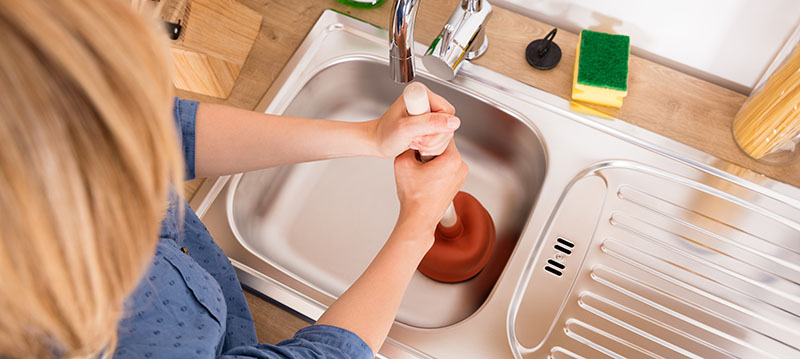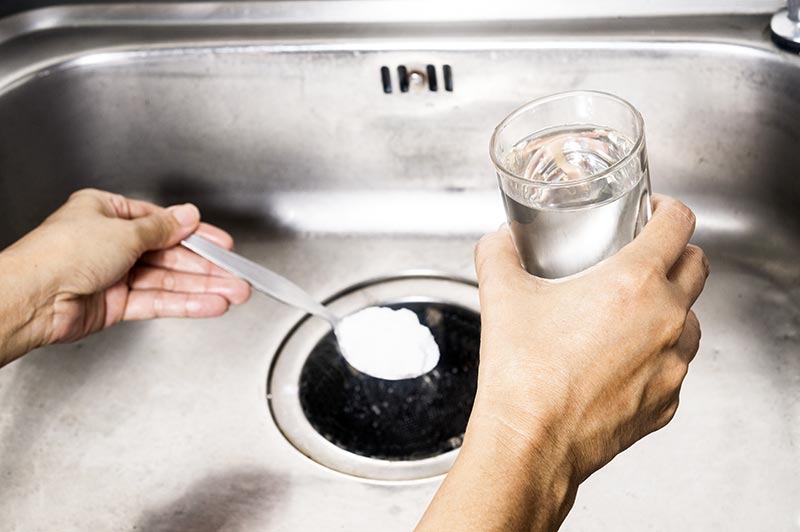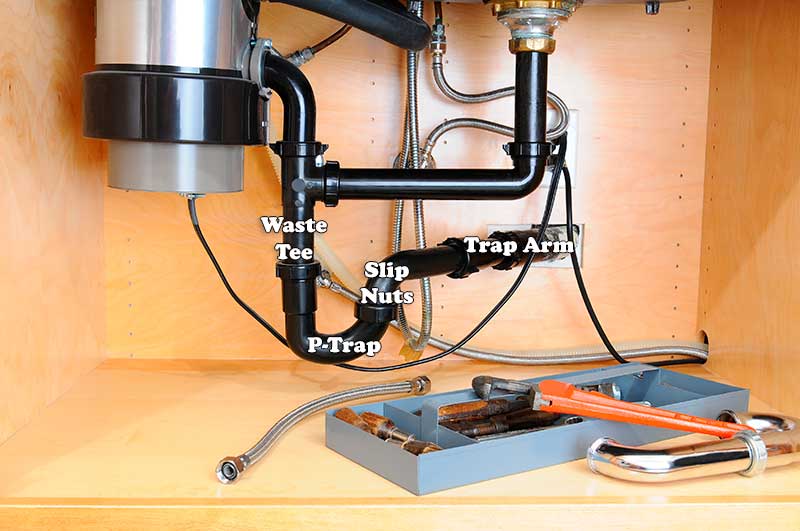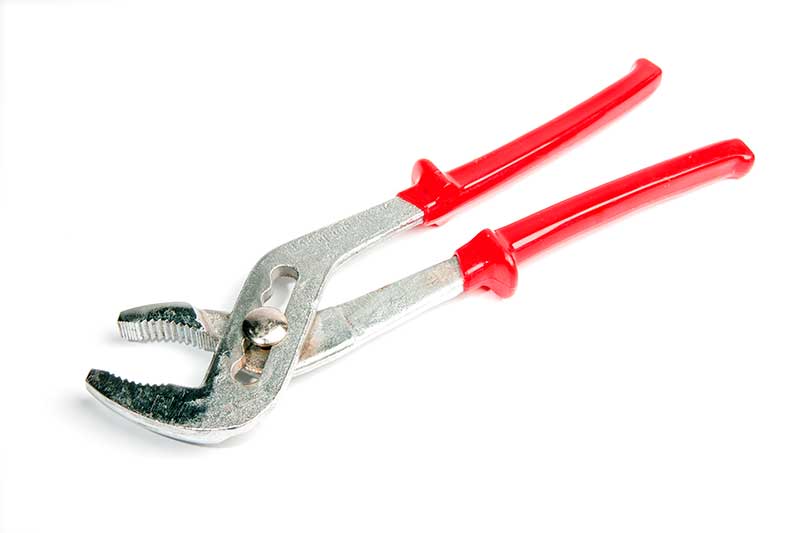
Learn How to Unclog a Sink with Our Simple Tips
You might feel helpless looking at how the water on your kitchen sink keeps backing up. At this moment, you might feel frustrated for not knowing how to unclog a sink. But don’t worry. Today, we will take some time to tell you some easy, do-it-yourself ways to fix a clogged sink.
Let’s be clear about something. DIY home projects are great for saving money and enjoying a good challenge. But there are some household projects that you should hand to professionals. In some circumstances, some plumbing repairs are not suitable for the average homeowner to perform.
How to Unclog a Sink without Calling the Plumber!
Pour Boiling Water in the Sink (Try It Several Times)
This is a trial and error tip. But it is the easiest and cheapest solution to unclog your kitchen sink.
So while you wait for the kettle or pot of water on the stove to boil, you can remove as much standing water from the sink as you can. You can use a small pot to take water out of the sink.
Now that the sink doesn’t have standing water, it’s time to pour the entire kettle of boiling water into the sink and wait.
If the clog doesn’t go after the first time you poured the hot water, you can wait for the water to cool down and then proceed to remove it from the sink. Then, it would be time for a second round. Boil the water and then pour it into the sink. You may need to repeat the process several times to move the clog, but this often works on many types of clogs.
Use a Plunger if Tip #1 Doesn’t Work
You have to fill the sink until is about ¼ or ½ of the way full with hot water. Then you position the plunger over the drain. If you have a double sink, you need to seal the unclogged drain with a washcloth to ensure that the plunger’s pressure is focused on the clog.
Work the plunger up and down quickly. Pull the plunger off of the drain opening and see if the water starts to drain. Continue using the plunger until the clog is dislodged. It may take a little while to dislodge the clog. If this doesn’t work, then try the next tip to unclog your kitchen sink.
Fix a Clogged Sink with Baking Soda and Vinegar

Another tip on how to unclog a sink includes two main ingredients: vinegar and baking soda.
Many times, we feel hopeless when we can’t fix a clogged sink. After all, it’s something that is almost inevitable. Our kitchen sinks can fill up with food waste, grease, or even hair. That’s why it’s essential to know a way to unclog it in a simple and secure way.
To unclog your kitchen sink, you can use either white vinegar or apple cider vinegar. You’ll need about half to a full cup of vinegar (depending on how clogged is your sink). You’ll also need the same amount of baking soda as well.
Before attempting to pour the vinegar and baking soda, remember to equip yourself with a pair of rubber gloves.
With your gloves put on, proceed on pouring the baking soda into the drain. Then pour the same amount of vinegar. You will notice that the combination of these two ingredients will start to bubble.
For a more clean and fresh smell, you can always add lemon juice to the solution. If you feel it necessary, feel free to push the combined solution down the drain.
Let the mixture sit there for about 10 to 15 minutes. After the waiting, pour about four cups of hot water into the sink. The combination of hot water, baking soda, and vinegar will surely dissolve whatever is clogging your drain.
Vinegar and baking soda is one of the best ways of how to fix a clogged sink.
Clean the P-Trap If the Plunger Didn’t Work

If the plunger tip or the baking soda and vinegar tip didn’t work, you need to get your hands dirty a little bit. You might need some tools, gloves, and a bucket before you start disassembling the trap.
There are two parts that you need to know. The P-trap and trap arm of the drain. The trap arm is the piece of pipe that connects the P-trap to the drain inside the wall.
Clogs that form in the P-trap and trap arm of the drain most often occur when grease or coffee grounds stick. If intensive plunging doesn’t remove it, disassemble and clean out the P-trap.
This task can take from 10 to 15 minutes.
a) Start by Disassembling the P-Trap
Whenever you are going to do some plumbing work under the sink, you must make sure the sink doesn’t have water accumulated.
So, you should begin by sponging the water from the sink to reduce the flow under the sink when you pull off the p-trap.
Of course, you should also put a big pan or bucket underneath, so when you disassemble the p-trap, the dirty water will flow out.
Loosen the slip nut on the trap arm assembly and then continue to loosen the waste tee nuts to wiggle the trap free.
Some drain lines are made of plastic, but some others are made of metal.

So, what happens is that metal traps and pipes are usually more difficult to loosen than plastic.
But either will probably require the use of slip-joint pliers to break them free. Loosen them gently to avoid cracking or bending the trap assembly.
b) Is Time to Clean Out the P-Trap
Unscrew the slip nut between the P-trap and the trap arm first, then the nut at the bottom of the waste tee.
Clean out any debris from the P-trap.
Inspect both the P-trap and the trap arm for cracks or weak walls. If it’s worn out, replace it to avoid problems in the future.
Reinstall the P-trap and test the line with warm water to see if you are good to go on your daily life with an unclogged kitchen sink.
Don’t over-tighten the slip nuts. Hand-tight plus a quarter turn with pliers should be enough.
We hope that this list of tips on how to fix a clogged sink is of great help to you!
Did your kitchen sink break down out of the blue? Did that emergency just ruin your whole day? There’s no need for you to panic since Discover Plumbing and Rooter is here to the rescue. Our services cover you from any type of situation, even emergencies.
Learn about Our Emergency Plumbing Services Here!
Use a Drum Auger If the P-Trap Wasn’t Clogged!
If you already assembled the P-trap and tried to pour water on the sink, but the water doesn’t flow, you’ll need to check further into the drain line.
In our list of steps of how to unclog a sink, using a drum auger is probably our last one.
A drum auger is a handy tool that can clear clogs that may be stuck further down the stub-out pipe.
If you don’t have a drum auger or the possibility to borrow or even rent one, you’ll be so much better off by calling the emergency plumber of your choice.
If you have access to a drum auger, we can go back to business!
We recommend using the BrassCraft Drum Auger. This product is excellent because it’s portable and powerful enough to unclog your kitchen sink.
How to Use the BrassCraft Drum Auger?
We don’t want to kill you of boredom with more text and text. So, we decided to pick one of the best and most trusted videos we could find on the Internet.
Here’s an amazing video from BrassCraft. This will teach you how to use the BrassCraft Drum Auger, and it will help you out with your sink unclogging!
https://www.youtube.com/watch?v=sJdV5XQ0Xgo&feature=emb_title
Almost Done! Use Hot Water to See If the Sink Drains
If the water flows well down the drain, congrats. You made it!
If the water runs slowly, then fill up the sink part of the way and use a plunger to dislodge the remains of the clog. Soon, you’ll see how water will start draining down normally.
What Do I Do If the Sink Is Still Clogged?
If you tried every tip of our little guide on how to unclog a sink, but the clog is still inside the drain, you need to call the emergency plumber of your choice!
We hope this guide was useful. Don’t forget to share these solutions with a friend, family member, or on social media. Till next time!
